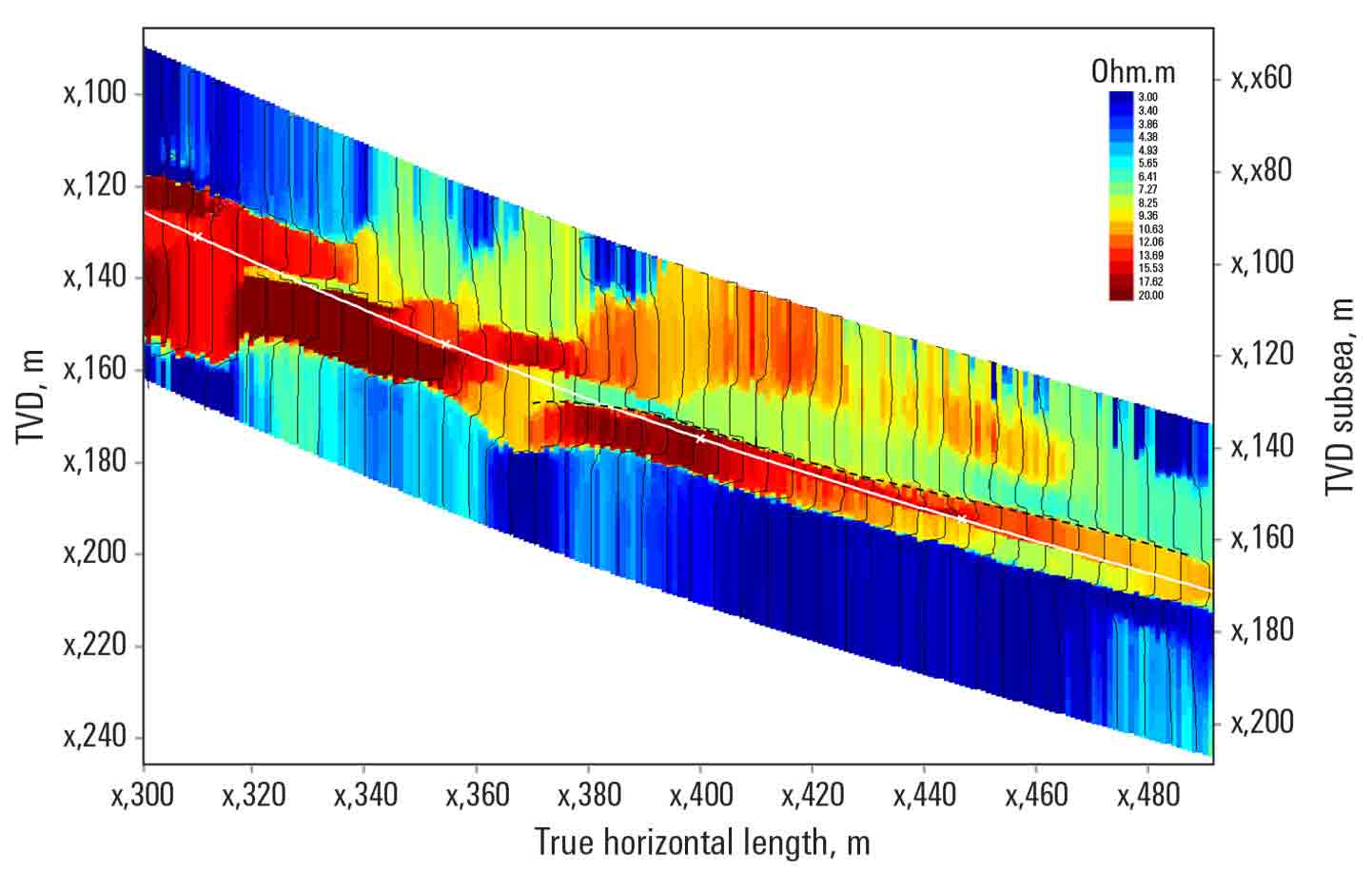Petronas discovers previously undetected channel sand with expected production of 1,700 bbl/d
SLB delineated subsurface bedding and fluid contact details of a channel sand to improve reservoir understanding.
Increase certainty in complex channel sand reservoir
Petronas planned to drill a horizontal well in Malaysia in a channel sand formation with uncertain fluid contacts, lateral sand distribution, and formation dips. To undertake this structurally and stratigraphically complex project, Petronas needed more information about the reservoir to determine the optimal well placement location to target a reservoir sand with expected production of 900 bbl/d.
Map reservoir to delineate subsurface bedding and fluid contact details
SLB complemented surface seismic data with interpreted mapping data from the GeoSphere™ reservoir mapping-while-drilling service to provide clear delineation of fluid contacts and geological surface dips.
We landed the well optimally to produce original drilling target with expected production of 900 bbl/d, imaged challenging anisotropic turbidite channel reservoir, revealing and additional hydrocarbon-bearing channel sand with expected production of 1,700 bbl/d, and provided key reservoir characterization data for future production and reservoir management.
SLB recommended using the GeoSphere reservoir mapping-while-drilling service to increase certainty by mapping the channel sand reservoir in real time more than 100 ft [30 m] from the wellbore. Using deep, directional electromagnetic measurements, the GeoSphere service would help Petronas refine the seismic model in real time, making the reservoir less risky to develop.
Landed well and revealed previously undetected reservoir sand
Using the GeoSphere service to fully map the channel sand reservoir, Petronas effectively landed the well on target to develop the reservoir sand, which had an expected production of 900 bbl/d. The mapping also led to the discovery of a second hydrocarbon-bearing sand with production of 1,700 bbl/d. Petronas drilled a sidetrack to develop the newly-discovered channel sand. As a result, the operator increased initial anticipated recovery rate by 88%, as compared to 900 bbl/d. Additionally, Petronas plans to produce the original target at an estimated 900 bbl/d as dictated by production in the larger channel sand.
Before entering the reservoir, the GeoSphere service mapped the top of the reservoir at 45-ft [14-m] true vertical thickness (TVT). The service mapped the top, base, and dip at distances up to 82 ft [25 m] from the wellbore. Using that information, Petronas was able to steer the lateral within the sweet spot for 1,968-ft [600-m] MD, complement seismic information, and enhance field development plans.

